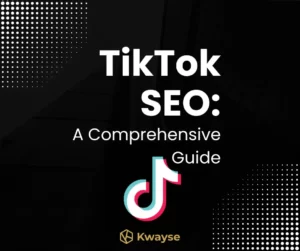In today’s digital world, having a functional web app is essential for businesses. Many entrepreneurs and business owners are seeking user-friendly and efficient tools to create their web applications without the need for traditional coding. Enter Bubble.io, a no-code platform that enables users to create custom web apps quickly and easily.
As a custom software development agency that has built hundreds of web apps for our clients, Bubble.io is our preferred platform.
In this beginner’s guide, we will answer some of the most frequently asked questions for those new to Bubble.io and provide a comprehensive review of this popular no-code app builder.
What is Bubble.io?
Bubble.io is a no-code app development platform that allows users to create custom web applications without writing any code.
By providing an intuitive visual editor and powerful tools for building and deploying web applications, Bubble.io empowers non-technical users to create fully functional web apps with ease.
With its drag-and-drop interface, pre-built components, and customizable workflows, Bubble.io allows users to focus on their app’s design and functionality rather than writing code.
How does Bubble.io function?
Once you log into Bubble, you can effortlessly create a new web application with a single click. This opens up the visual editor, which allows you to “code” your app using point-and-click commands instead of traditional programming. The process consists of three main components:
- Design: Use drag-and-drop to add elements to each page, crafting visually appealing user interfaces.
- Database: Develop a customized relational database structure to suit your needs.
- Workflows: Specify the sequence of actions the app should perform in response to certain events (e.g., “when a user clicks this button, store the data from these inputs in these fields and navigate the user to the checkout page”).
You can preview your app at any time to ensure it functions correctly. Once you’re satisfied, publish your changes to a live version on your custom domain, and your app is ready for use!
Behind the scenes, the Bubble.io platform converts your editor configurations into code that web browsers can interpret (i.e., HTML and JavaScript). So, while “no-code” may not be entirely accurate, you don’t have to write the code yourself.
Bubble also takes care of all the backend work necessary to host your application. This includes setting up virtual servers, optimizing performance, updating code bases to work with the latest technologies, and implementing numerous security measures to ensure safety. While conventional coding practices often require you to handle these aspects yourself, Bubble allows you to focus on building your app while it manages the rest.
Why choose Bubble.io?
Bubble.io has gained popularity among no-code enthusiasts for several reasons:
- Flexibility: Unlike other no-code tools that cater to specific use cases (e.g., Shopify for e-commerce) or components of the tech stack (e.g., Airtable for databases), Bubble.io serves as the closest alternative to custom coding when it comes to building unique, complex software.
- Extensive functionality: Bubble.io offers a wide array of built-in elements, plugins, and integrations, making it possible to create apps with diverse functionality without writing any code.
- Scalability: Bubble.io is built on top of Amazon Web Services (AWS), allowing users to scale their apps as needed.
- Cost-effective: Bubble.io offers a more affordable alternative to hiring developers or outsourcing app development.
- Active community: Bubble.io boasts a thriving community of users who share knowledge, resources, and support, making it easier for beginners to learn and grow.
How secure is Bubble.io?
Bubble.io takes security seriously and is built on top of Amazon Web Services (AWS), a highly secure and reliable infrastructure. The platform provides various security features, including SSL encryption, role-based access control, and secure data storage. However, it’s essential to implement best practices and follow the platform’s security guidelines to ensure your app’s data remains secure.
Can I build mobile apps with Bubble.io?
While Bubble.io primarily focuses on web app development, it is possible to create mobile-responsive apps or wrap your web app into a native mobile app using third-party tools like PhoneGap or WebViewGold. However, if you’re looking to build a native mobile app from scratch, Bubble.io might not be the best choice.
What types of applications can I build with Bubble.io?
Bubble.io is a versatile no-code platform that enables users to create a wide range of applications across various industries and use cases. Here are some common types of applications you can build with Bubble.io:
E-commerce platforms: Build online stores with product listings, shopping carts, and secure payment processing using integrations with popular payment gateways like Stripe and PayPal.
Social networks: Create community-based platforms that allow users to create profiles, connect with others, share content, and send messages.
Project management tools: Develop custom task management systems, Kanban boards, or collaboration tools to streamline project workflows and improve team productivity.
Online marketplaces: Design peer-to-peer platforms that connect buyers and sellers, such as freelance job boards, classifieds websites, or service marketplaces.
Event management platforms: Build event registration and management systems with features like ticketing, scheduling, and attendee management.
Content management systems (CMS): Create custom blog or news websites with user-generated content, commenting systems, and content moderation features.
Online learning platforms: Develop e-learning platforms or course management systems that include features like course creation, content delivery, quizzes, and progress tracking.
CRM and sales tools: Build custom customer relationship management (CRM) systems, sales pipelines, or lead management tools to help businesses better manage their customer interactions.
HR and recruitment platforms: Design human resources management systems with features like applicant tracking, employee onboarding, timesheets, and payroll management.
Analytics and reporting tools: Create custom dashboards and reporting tools to visualize and analyze data from various sources, helping businesses make data-driven decisions.
Custom business applications: Develop industry-specific applications tailored to your business’s unique requirements, such as inventory management systems, real estate listing platforms, or healthcare patient management systems.
The flexibility and extensive functionality of Bubble.io make it possible to create virtually any type of web application without needing to write traditional code. With its vast array of built-in features, plugins, and API integrations, the possibilities are virtually limitless.
What types of applications shouldn’t I build with Bubble.io?
High-performance gaming: If you’re looking to create a high-performance game with advanced graphics, animations, and real-time processing, Bubble.io might not be the best choice. For such projects, specialized game development engines like Unity or Unreal Engine would be more suitable.
Native mobile apps: Bubble.io is primarily designed for building web applications. While it’s possible to create a responsive design that works well on mobile devices, Bubble does not support native mobile app development out of the box. If you need a native mobile app for iOS or Android, consider using platforms like React Native, Flutter, or Xamarin.
Extremely large-scale applications: While Bubble.io can handle a considerable amount of traffic and data, extremely large-scale applications with millions of users and complex data structures might require a custom-coded solution to ensure optimal performance, scalability, and security.
Applications with specialized hardware requirements: If your app requires direct interaction with specialized hardware (e.g., IoT devices, sensors, or custom peripherals), Bubble.io may not be the best choice. In such cases, a custom-coded solution that can communicate directly with the hardware would be more appropriate.
Apps with stringent security or compliance requirements: While Bubble.io offers robust security features, some applications, such as those dealing with sensitive information or regulated industries, may require custom security measures that go beyond what Bubble can provide.
How scalable is an app built on Bubble.io?
Apps built on Bubble.io are generally scalable, thanks to the platform’s robust infrastructure and ability to handle a wide range of use cases. However, the scalability of a Bubble app depends on several factors, such as the app’s design, architecture, and optimization, as well as the chosen hosting plan.
Here are some aspects to consider when assessing the scalability of a Bubble app:
Performance optimization: Building an app with efficient workflows, data structure, and user interface design is essential for ensuring smooth performance as the user base grows. Regularly monitoring and optimizing the app’s performance can help identify potential bottlenecks and address them before they become problematic.
Backend infrastructure: Bubble.io takes care of the backend infrastructure, ensuring that the platform can handle increased traffic and usage as your app scales. Bubble handles server management, database scaling, and security updates, so you can focus on building and improving your app.
Hosting plans: Bubble offers different hosting plans to accommodate the growing needs of your app. Upgrading to a higher-tier plan provides increased server capacity, faster response times, and dedicated resources, all of which contribute to improved scalability.
Plugins and integrations: As your app grows, you may need to incorporate more features or integrations. Bubble.io offers a vast library of plugins and the ability to connect with external APIs, allowing you to expand your app’s functionality as needed.
Custom code: If you reach the limits of Bubble’s no-code capabilities, you can use custom HTML, CSS, and JavaScript to extend your app’s functionality and maintain scalability.
Can I export my Bubble.io app’s code?
While Bubble.io primarily focuses on providing a no-code platform for creating web applications, it does not offer a direct option to export the entire code of your application. Bubble.io applications run on the Bubble infrastructure, and the platform handles the backend processes, hosting, and database management.
However, you can export some parts of your application, such as the user interface. Bubble.io allows you to export your app’s front-end design as static HTML, CSS, and JavaScript files, which can then be used in other projects or web development environments.
To export the front-end design, go to the ‘Settings’ tab in the Bubble.io editor, and then navigate to the ‘General’ tab. Scroll down to find the ‘Export Application’ section and click ‘Export this application.’ Keep in mind that this export will only include the front-end design, not the workflows or database structure associated with your app.
Do I need any coding experience to use Bubble.io?
No, Bubble.io is designed specifically for users without any coding experience. The platform’s visual editor, drag-and-drop interface, and visual programming language make it accessible to users of all skill levels.
How long does it take to learn Bubble.io?
The learning curve for Bubble.io is generally steeper than other “no-code” tools such as Webflow which focuses on building a front-end website for example. However, most beginners can start building simple apps within a few days or weeks, but it could take months or years to become an expert Bubbler.
Should I learn Bubble.io myself or hire an expert Bubble.io developer?
Deciding whether to learn Bubble.io yourself or hire an expert Bubble.io developer depends on your specific needs and circumstances. Here are some reasons to consider hiring an expert:
- Time constraints: An expert can develop your app quickly, saving you time to focus on other aspects of your project or business.
- Complexity: If your app requires advanced features or complex integrations, an expert can handle them more efficiently.
- Custom solutions: Experts can develop custom plugins or workarounds for unique requirements.
- Best practices: An expert will follow industry best practices, ensuring optimal performance and user experience.
However, learning Bubble.io yourself can be rewarding and cost-effective for simpler projects or if you have time to invest in learning the platform.
What is a bubble.io agency and what are the benefits of hiring one?
A Bubble.io agency is a professional service provider that specializes in designing, developing, and deploying web applications using the Bubble.io platform. These agencies have teams of expert Bubble.io developers who possess in-depth knowledge and experience in using the platform. Here are some benefits of hiring a Bubble.io agency:
- Expertise: Agencies have dedicated teams with extensive experience in Bubble.io, ensuring high-quality results and efficient project completion.
- Time-saving: Hiring an agency frees up your time to focus on other aspects of your business or project.
- Scalability: Agencies can handle projects of varying sizes and complexity, from simple apps to enterprise-level solutions.
- End-to-end service: Bubble.io agencies typically provide comprehensive services, including app design, development, testing, deployment, and maintenance.
- Best practices: Agencies adhere to industry standards and best practices, ensuring your app has optimal performance and user experience.
- Custom solutions: Agencies can develop custom plugins or solutions to meet your specific requirements or integrate with third-party services.
- Ongoing support: Agencies often provide post-deployment support and updates, ensuring your app remains up-to-date and functional over time.
Hiring a Bubble.io agency can be a valuable investment if you’re looking for professional expertise, time savings, and a comprehensive approach to your web application development needs.
How to get started with Bubble.io?
Sign up for a free account: Visit Bubble.io and sign up for a free account. The free plan offers access to the core features of the platform, allowing users to create and deploy basic web applications.
Explore the visual editor: Once signed up, you can start a new project and explore the visual editor. The editor is divided into several sections, including the design tab for adding and customizing app elements, the workflow tab for defining app logic, the data tab for managing the database, and the plugins tab for adding third-party integrations.
Add elements to your app: Bubble.io provides various pre-built elements, such as buttons, text inputs, and images, which can be added to your app by simply dragging and dropping them onto the canvas. You can then customize the appearance and behavior of each element as needed.
Define workflows: Workflows are the backbone of your app’s functionality. They consist of a series of actions that are triggered by specific events, such as a button click or a page load. In the workflow tab, you can define the logic for each event using Bubble.io’s visual programming language.
Set up the database: Bubble.io uses a built-in, fully customizable database to store and manage your app’s data. In the data tab, you can create data types, define fields, and set up relationships between data types.
Preview and test your app: Throughout the development process, you can preview your app in real-time by clicking the “Preview” button in the editor. This allows you to test your app’s functionality and make any necessary adjustments before deploying it.
Deploy your app: Once you’re satisfied with your app’s design and functionality, you can deploy it to a live environment. Bubble.io provides a custom subdomain for each app, but you can also configure your own custom domain if desired. The deployment process is straightforward and requires just a few clicks within the editor.
Monitor and maintain your app: After deploying your app, it’s essential to monitor its performance, address any issues, and make updates as needed. Bubble.io offers built-in analytics and performance monitoring tools to help you keep your app running smoothly.
Upgrade to a paid plan (optional): While the free plan is sufficient for building basic apps, Bubble.io offers several paid plans with additional features, increased capacity, and priority support. Upgrading to a paid plan can help you take your app to the next level.
Need help building an app with Bubble?
If you need help building an app with Bubble, don’t hesitate to reach out to our expert team at Kwayse. Book a call with us today and let us help you transform your ideas into powerful web apps using the industry-leading no-code platform. Schedule your consultation now: Book a Call



